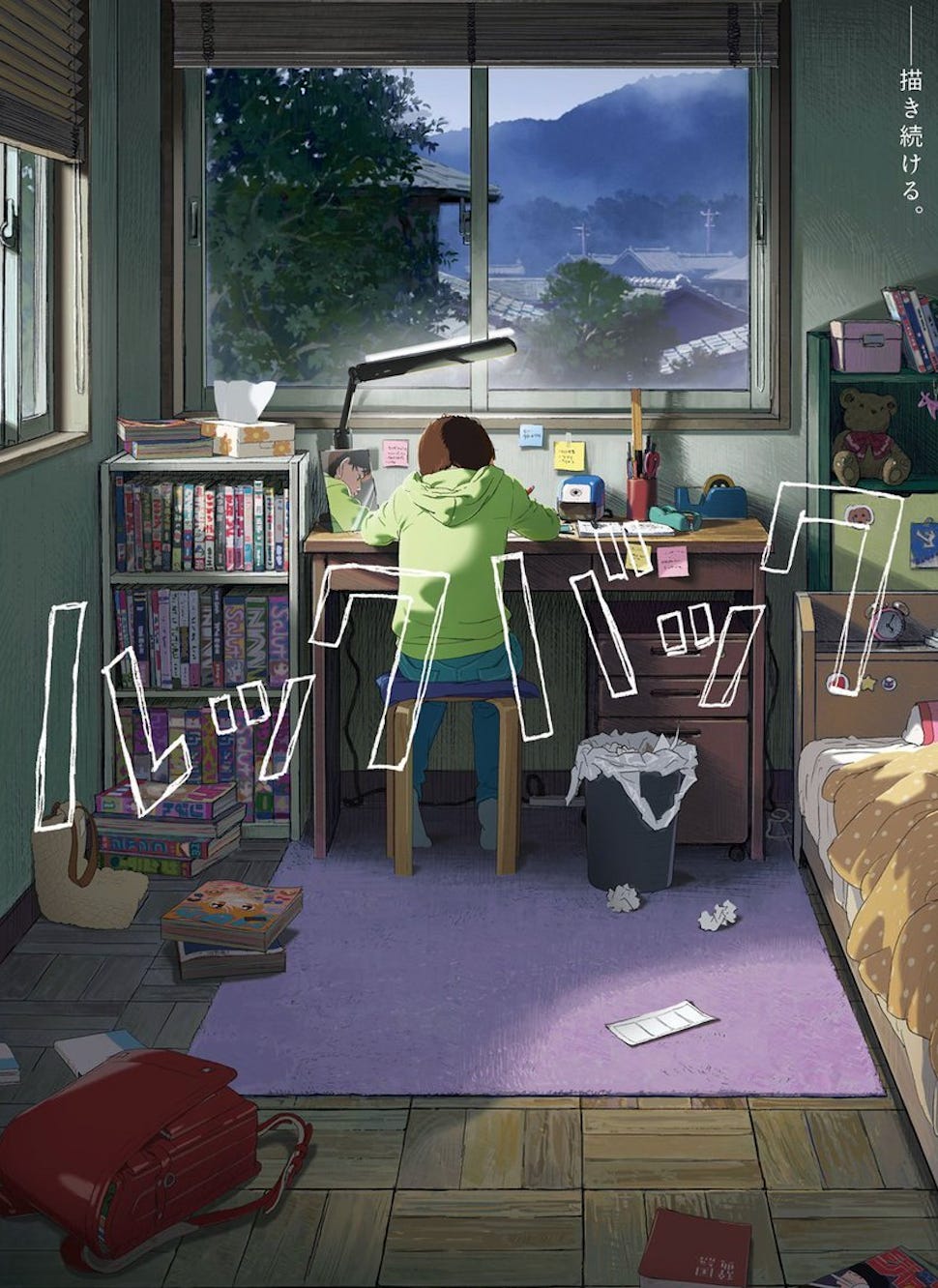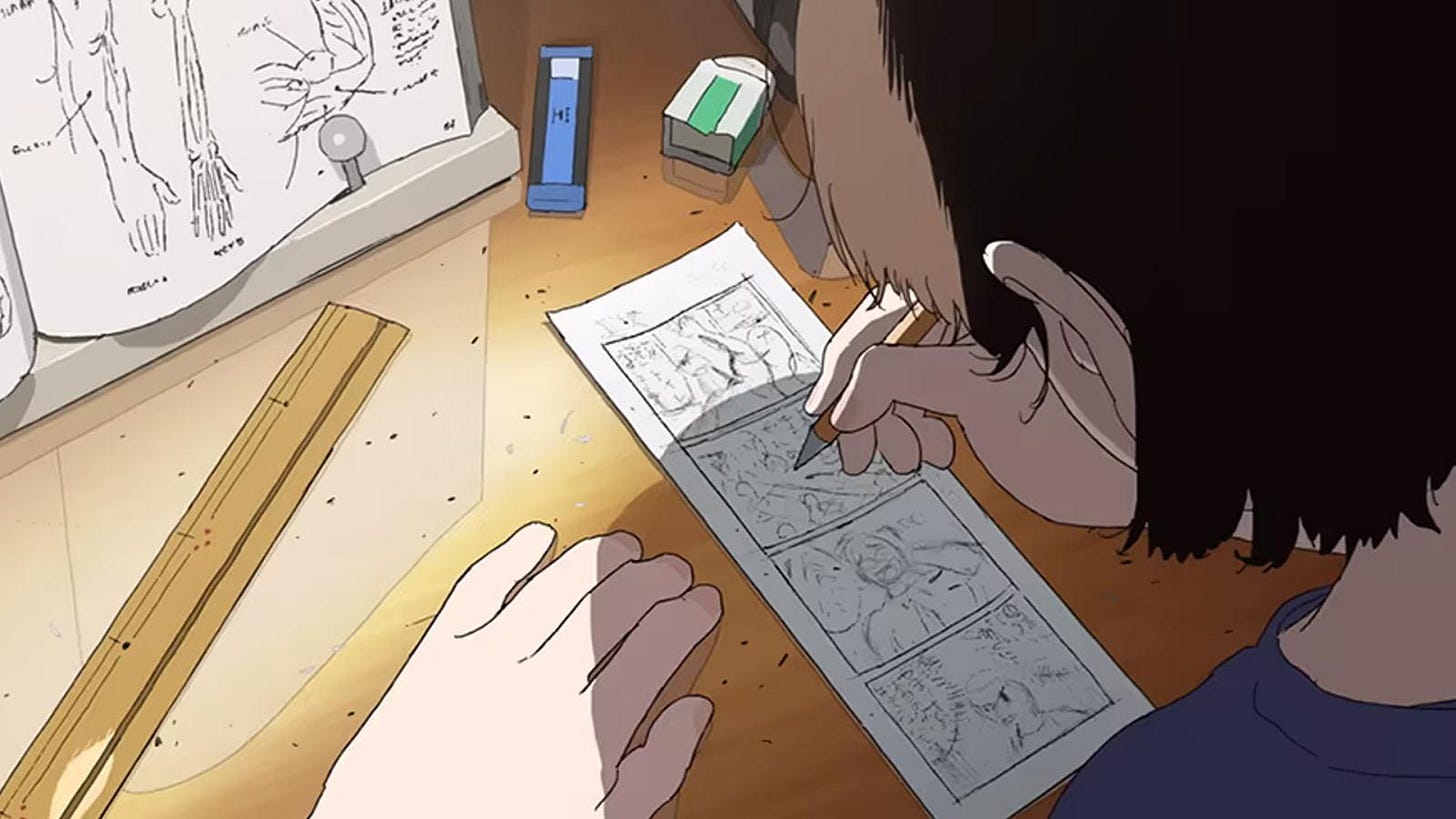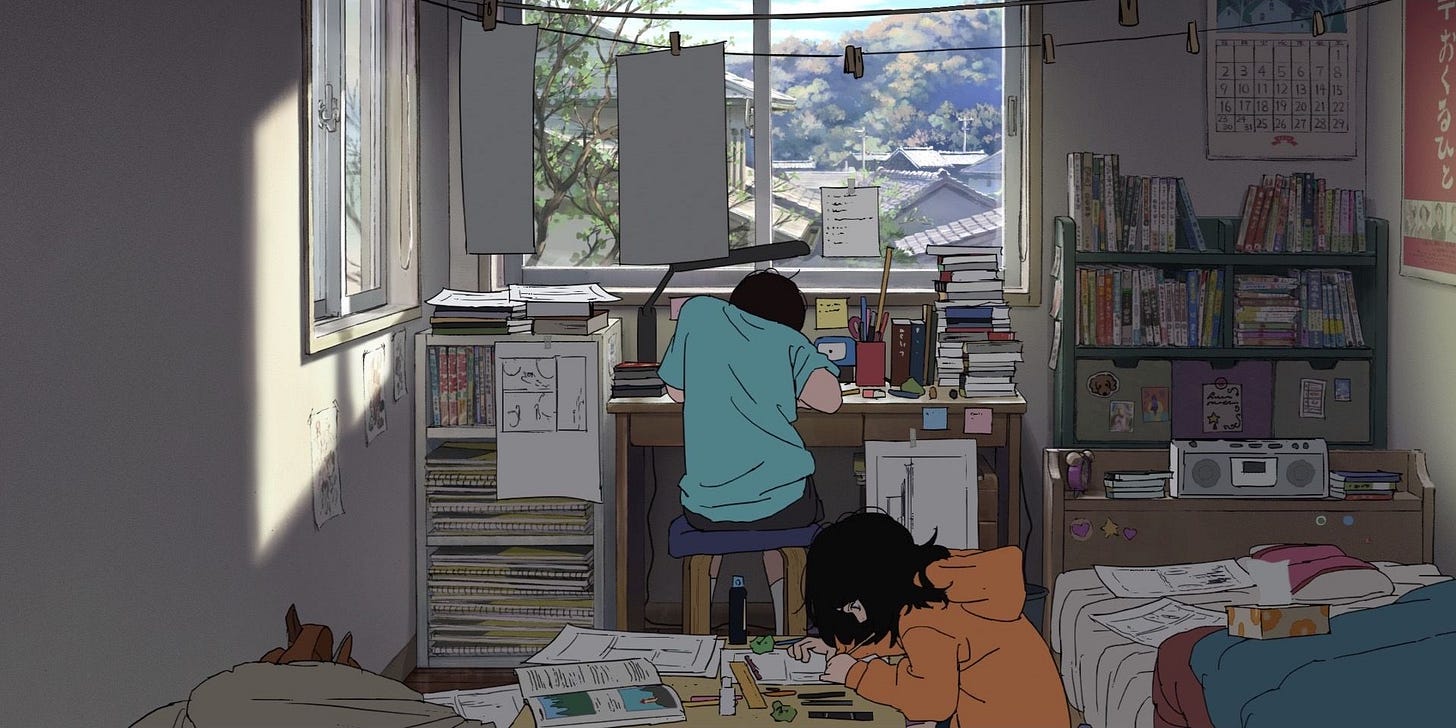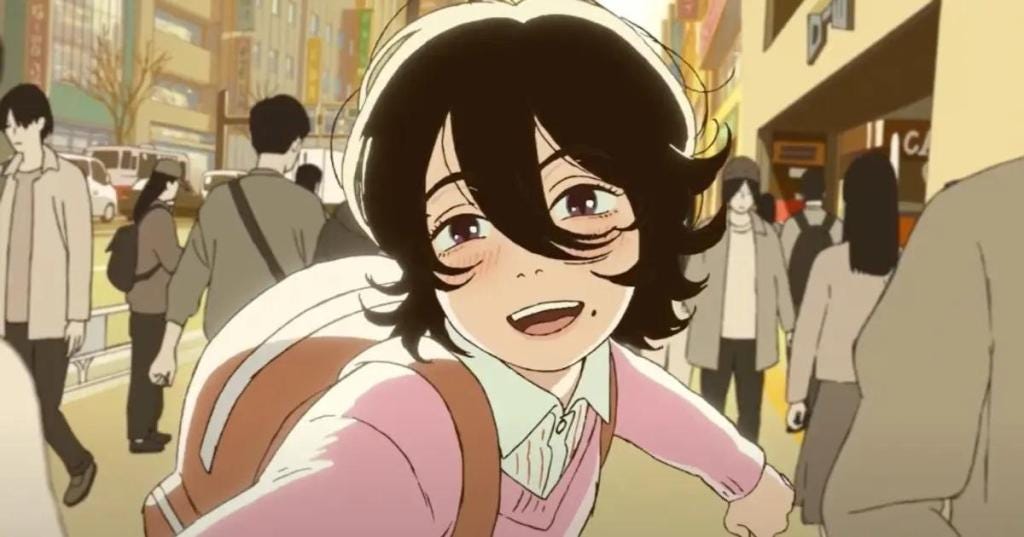[ spoilers ahead! ]
i wish i could tell you that the anime movie was different from the original one-shot manga it adapted from. unfortunately for fans, it was exactly the same.
but fortunately for fans, it was also exactly the same, and so much more.
if you’ve read the one-shot manga Look Back by Chainsawman mangaka Tatsuki Fujimoto back in 2021 when it first came out, congratulations, you’re the cool kid. because i had never heard of this manga. i only knew of it as the movie when it came out.
(also, tbh, it’s been nearly a month since i’ve seen this movie, and i’m only writing this now because it’s always so hard to start. so here i am! starting!)
the joy of creating vs. obsession
Fujino is an annoying kid who thinks she’s all that because she’s the sole artist drawing manga in her year for the weekly school newspaper.
Kyomoto is a truant who refuses to come to school. She starts drawing manga for the school paper too, and it’s absolutely brilliant.
then comes a series of scenes where Fujino draws — nay, obsesses over her art for an entire school year. she finally gives up when she realises that she will never overtake Kyomoto.
it isn’t hard to piece together that Fujino and Kyomoto makes up “Fujimoto”, the last name of the mangaka writing this story. both these girls are representations of, i believe, every artist. there is a part of us (Kyomoto) who loves drawing for the sake of it and will always be contented with just drawing. there is, however, another part of us (Fujino) who loves drawing, but gets defeated in the process, and we either choose to give up or keep going, even if it’s embarrassing to move forward. even when you’re “too old” to be drawing anymore. even when the whole world thinks you are talentless and should just pursue a different path.
as artists, we are often navigating this fine line between obsession and joy. obsession gets you to greatness, but so does joy.
obsession drives us to achieve. to not want to lose. to be competitive. obsession also drives us into the ground. buries ourselves. isolates us.
joy brings us pure wonder. to love every line and colour. to see beauty in everything we make. joy also keeps us contented. leaves us here. numb and happy.
i want to believe that there are pros and cons to either paths, and they will always always always co-exist in us. these are very extreme examples of what both these emotions bring us, but they must live together, they must be friends, and they will always be friends. you cannot choose one without the other.
present moment vs. memories
there is a beautiful juxtaposition of scenes in the middle of the movie and near the end. in the middle of the movie, we see Fujino and Kyomoto in the same room, drawing their manga. the camera angle remains the same. they shift around the room, papers and stationery constantly moving and switching places. but the angle is always the same. it has a big sense of mundaneness. the striving to do the work. the work that never ends.
near the end of the movie though, when Fujino thinks back on her memories with Kyomoto, the same scenes transformed. it’s still the same room. still the same events. but everything seems to be richer, bigger, better. more details, more laughter, more colour.
so i thought to myself, living in the present moment — it’s boring.
but every time we look back (pun intended, i am holding back tears) at our treasured memories, they look incredibly different. like a scenery trapped in a snow globe, beautiful forever. memories are romanticised moments. i remember reading about how the more you remember the same memory, the more you are actually altering it — making your favourite memories the most “inaccurate” ones.
but are they inaccurate? or do we capture more than just the physical details of the event? every scent, every feeling, every whisper, every wind in your face. whether it’s made up or not to make that one memory all the more better, it is what you remember. it is what you want to remember.
and that makes the memory yours.
in every universe, we are best friends
no Tatsuki Fujimoto manga is complete without a weird insert of sci-fi, or just a general feeling of weirdness. aside from the cringey rain scene that forced us to look at Fujino’s raw joy and embarrassment (as shown below), there is an obvious weird thing.
there is a door that travels through dimensions.
or, um, more specifically, the gap underneath the door.
yes, the story is heartbreaking, heart-wrenching, heart-stomping. but i left the cinema feeling a little hopeful because of this alternate dimension act.
in a universe where Fujino and Kyomoto never met in high school, they still find their paths crossing anyways — Fujino saving Kyomoto from an art student who was attacking any students he laid eyes on. in the original universe that we had already emotionally invested ourselves in, Kyomoto dies from this attack. they had an estranged relationship since Kyomoto decided to pursue art school on her own, leaving Fujino to work on the manga alone.
both universes are sad to me. one leads to death. the other never had the shared joy of creating when they were much younger, when they likely needed each other the most.
but they save one another anyways.
because in every universe, they will always be friends.
by the power of a four-panel manga strip that travelled from a different dimension, a grieving Fujino hopes again. the ending is exquisite — a long take of Fujino’s back at her office, drawing from sunrise till sundown, all with the tiny piece of salvaged another-dimension paper stuck on the giant glass window before her. the music swells, but we never see Fujino’s face, until she finally leaves.
in every universe, they will always be best friends. in death, in life, in every universe.
and that makes me want to cry as much as it makes me want to hope.
i leave you with the beautiful OST, which i’ve been listening to on and off. sometimes on a drive, sometimes when i work, sometimes when i write.









